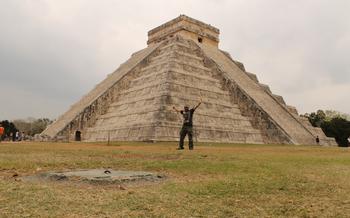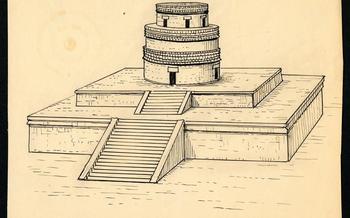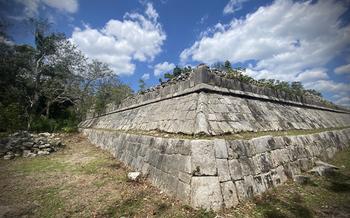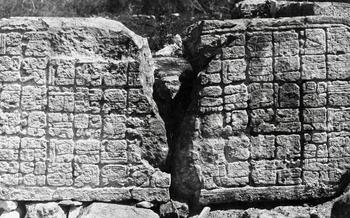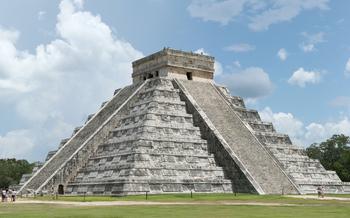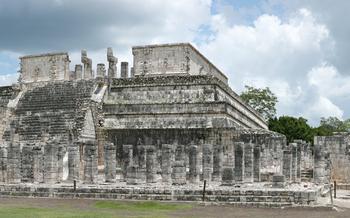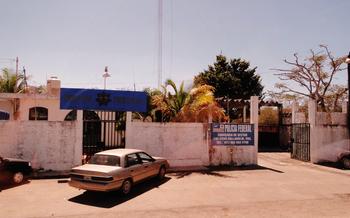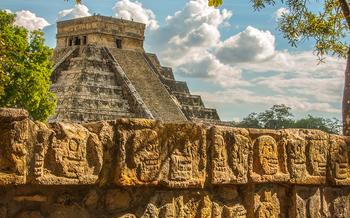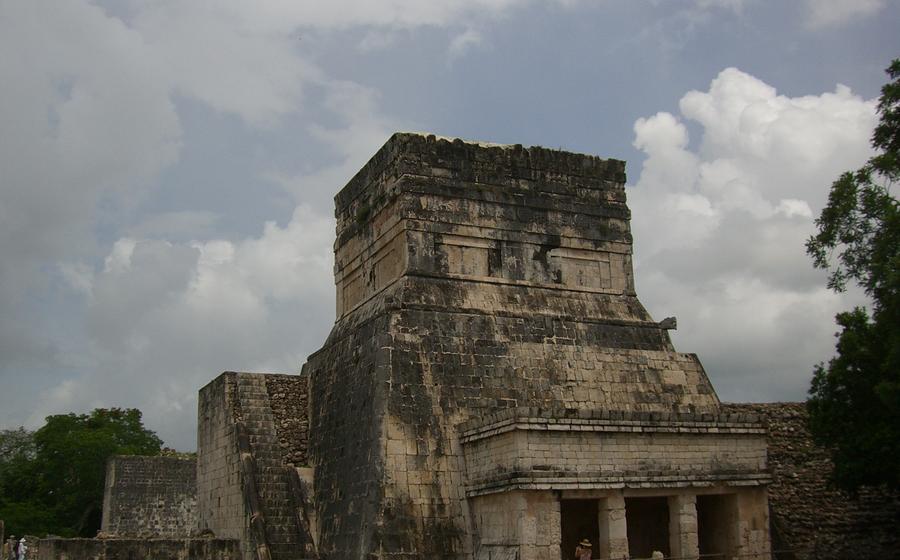
Tulum
- Historical Significance
- Architectural Wonders
- Religious and Cultural Importance
- Practical Tips for Visitors
- Unveiling the Mystery of El Castillo
- Exploring the Cenote Sagrado
- The Ancient Mayan Ball Game
- Uncovering the Secrets of Chichen Itza
- Exploring Beyond Chichen Itza
- The Legacy of the Mayans
- Sustainable Tourism Practices
- Photography Tips:
- Chichen Itza at night: A Mesmerizing Experience
- Local Cuisine and Handicrafts
Historical Significance
Journey back in time to the ancient Mayan city of Chichen Itza, a UNESCO World Heritage Site that stands as a testament to the ingenuity and cultural prowess of this enigmatic civilization. Explore the sprawling ruins, immersing yourself in the grandeur of El Castillo, also known as the Temple of Kukulcan, the iconic pyramid that dominates the skyline. Learn about the rise and fall of the Mayan civilization, their complex social structure, and the cultural impact they left on the region. Discover the secrets behind the construction of El Castillo, a marvel of engineering and astronomy that aligns with the movements of the sun and stars. Witness the impressive ball court, where the ancient Mayan ball game, a ritual of both sport and religious significance, was once played. Chichen Itza, with its rich history and architectural wonders, offers a glimpse into the fascinating world of the ancient Mayans.
Architectural Wonders
The ancient city of Chichen Itza showcases remarkable architectural achievements that continue to astound visitors. Admire the intricate carvings and sculptures adorning the buildings, depicting Mayan deities, mythical creatures, and symbolic motifs. Marvel at the precision and craftsmanship evident in the construction of the structures, showcasing advanced engineering techniques. Climb the steep steps of El Castillo, the iconic pyramid also known as the Temple of Kukulcan, to experience breathtaking views of the surrounding jungle and the vast expanse of the site. Explore the lesser-known structures like the Temple of the Warriors, with its impressive colonnades and detailed bas-reliefs, and the Great Ball Court, the largest in the Mayan world, where the ancient ball game was played with religious and cultural significance.
Religious and Cultural Importance
Chichen Itza was not just a city; it was a spiritual and cultural hub for the ancient Mayans. Delve into the intricacies of their religious beliefs and practices, including their reverence for the Cenote Sagrado, a natural well considered a sacred portal to the underworld. Discover how Chichen Itza served as a major pilgrimage site, where people from across the Mayan world gathered to pay homage to their gods and participate in elaborate rituals. Witness the reenactment of these ancient ceremonies and rituals, transporting you back in time to experience the vibrant spirituality of the Mayans.
Practical Tips for Visitors
To make the most of your visit to Chichen Itza, keep in mind a few practical tips:
-
Timing: Avoid the peak tourist season (December-April) to escape the crowds. Consider visiting during the shoulder season (May-June and September-October) for a more tranquil experience. Early mornings and late afternoons offer the most pleasant temperatures, allowing you to explore the ruins in relative peace.
-
Attire: Dress appropriately for the tropical climate, with lightweight, breathable clothing and comfortable walking shoes. The uneven surfaces and stairs of the ruins require proper footwear. Sunscreen, sunglasses, and a hat are essential to protect yourself from the intense sun.
-
Hydration: Bring plenty of water to stay hydrated throughout your visit. The heat and humidity can be draining, especially during the midday sun. Consider carrying a reusable water bottle to minimize plastic waste. Snacks and light refreshments are also advisable, as food options within the site are limited.
-
Safety: Be mindful of your surroundings and belongings, as petty theft can occur in crowded areas. Respect the designated pathways and avoid climbing or touching the ruins to preserve their integrity.
Unveiling the Mystery of El Castillo
El Castillo, or the Temple of Kukulcan, is the most iconic structure at Chichen Itza, captivating visitors with its architectural prowess and shrouded in mystery. Various theories attempt to unravel the secrets behind its construction and purpose.
One compelling theory suggests that El Castillo served as a solar observatory. Its alignment with the sun during the spring and autumn equinoxes creates a stunning light and shadow show, casting the illusion of a serpent slithering down the pyramid's staircase—a symbolic representation of the Mayan god Kukulcan.
Another theory focuses on the pyramid's acoustics. When a person claps or makes a sound at the base of the pyramid, a distinct echo is produced, resembling the call of a quetzal bird—a sacred symbol in Mayan culture. This phenomenon adds to the mystical aura surrounding El Castillo.
Archaeologists have also discovered hidden chambers and tunnels within the pyramid, leading to speculation about its use for religious rituals or astronomical observations. Ongoing excavations continue to shed light on the enigmatic nature of this ancient masterpiece.
Exploring the Cenote Sagrado
Marvel at the beauty of the Cenote Sagrado, a natural sinkhole with crystal-clear water that lies just a short walk from the main ruins of Chichen Itza. This cenote, which means "sacred well," was a significant site for the ancient Mayans, who believed it to be a portal to the underworld.
Learn about the sacred significance of the cenote and its role in Mayan rituals. According to Mayan beliefs, the cenote was a place where offerings were made to the gods, and it was also used for purification ceremonies. The water of the cenote was considered to be sacred, and it was believed to have healing properties.
Take a refreshing dip in the cenote's cool waters to cool off from the heat and humidity of the Yucatan Peninsula. The water is crystal clear and refreshing, and it's a great way to experience the natural beauty of the cenote.
Admire the lush vegetation surrounding the cenote, creating a picturesque landscape. The cenote is surrounded by lush tropical vegetation, including ferns, orchids, and bromeliads. The vegetation adds to the beauty of the cenote and creates a tranquil and serene atmosphere.
The Ancient Mayan Ball Game
The ancient Mayan ball game, known as Pok-ta-Pok, was a significant cultural and religious event deeply embedded in Mayan society. The impressive ball court at Chichen Itza, the largest in the Mayan world, stands as a testament to the importance of the game.
During the game, two teams of seven players competed against each other using a solid rubber ball. The objective was to keep the ball in play and score points by hitting it through a stone hoop attached to the court's walls. The game was played with the hips, elbows, and knees, and the use of hands or feet was prohibited.
Beyond its competitive nature, the game held profound religious and symbolic meanings. The ball represented the sun, and the hoop symbolized the underworld. The outcome of the game was believed to influence agricultural fertility, rainfall, and the overall well-being of the community.
Today, visitors can witness a demonstration of the game or even participate in an interactive experience. Engaging in this ancient tradition provides a unique opportunity to understand the cultural and spiritual significance of the Mayan ball game.
Uncovering the Secrets of Chichen Itza
To fully comprehend the significance of Chichen Itza, consider embarking on a guided tour. These knowledgeable guides will unveil the intricate history, culture, and architecture of this ancient city. Allow them to transport you back in time as they narrate tales of the Maya civilization's rise and fall. Immerse yourself in the stories of their daily lives, religious beliefs, and advanced mathematical and astronomical prowess.
The on-site museum is a treasure trove of knowledge, housing a vast collection of artifacts unearthed during excavations. Peruse ancient pottery, intricate carvings, and remnants of everyday life that provide tangible connections to the past. Learn about the meticulous research and painstaking efforts of archaeologists who have dedicated their lives to unraveling the mysteries of Chichen Itza.
Engage with the local Mayan communities to gain a deeper understanding of their cultural heritage and enduring connection to this sacred site. Participate in workshops or demonstrations to witness firsthand the intricate techniques used to create traditional Mayan crafts, such as weaving, pottery, and woodcarving. These interactions offer a unique glimpse into the living legacy of the Maya people.
Exploring Beyond Chichen Itza
While Chichen Itza is a must-visit destination, the Yucatan Peninsula is home to many other ancient Mayan ruins that offer unique experiences. Ek Balam is a well-preserved site with an impressive acropolis and a large ball court. Coba, surrounded by a lush jungle, features a towering pyramid that visitors can climb for panoramic views. Uxmal, known for its elaborate architecture, boasts the Governor's Palace, the Nunnery Quadrangle, and the Great Pyramid.
Beyond the ruins, the colonial city of Valladolid is worth exploring, with its colorful buildings, charming streets, and lively atmosphere. For a taste of the region's natural beauty, visit the stunning beaches of the Riviera Maya, swim in the refreshing waters of a cenote, or hike through the lush jungles of the Yucatan Peninsula.
Immerse yourself in the local cuisine, sampling traditional Mayan dishes such as cochinita pibil (slow-roasted pork), papadzules (tortillas filled with eggs and pumpkin seeds), and panuchos (fried tortillas topped with beans, meat, and vegetables). Don't miss the opportunity to purchase handcrafted souvenirs in the local markets, supporting local artisans and taking home unique pieces of Mayan culture.
The Legacy of the Mayans
The Mayan civilization left an enduring legacy that continues to shape the cultural landscape of Mexico and the wider Mesoamerican region. Their advanced knowledge of astronomy, mathematics, and architecture is still studied and admired today. The Mayans developed a complex writing system, created intricate calendars, and possessed a deep understanding of the natural world. Their influence can be seen in the art, architecture, and traditions of modern-day Mexico, Guatemala, Belize, and Honduras.
The Mayans were skilled artisans and craftsmen, creating beautiful pottery, textiles, jewelry, and sculptures. Their art often depicted religious and mythological scenes, showcasing their rich imagination and symbolism. The Mayans also had a sophisticated understanding of agriculture, developing irrigation systems and cultivating a variety of crops, including maize, beans, and squash.
Their legacy lives on in the vibrant traditions and customs of contemporary Mayan communities. Many Mayan languages are still spoken, and traditional Mayan crafts and rituals are still practiced. The Mayan worldview, with its emphasis on harmony with nature and the interconnectedness of all things, continues to inspire and guide the people of the region.
Sustainable Tourism Practices
As a responsible traveler, it is essential to prioritize sustainability when visiting Chichen Itza. Choose tour operators that adhere to eco-friendly practices, minimize waste, conserve water, and support local businesses. Learn about the challenges facing the preservation of this iconic site and how tourism can contribute to its protection. Encourage responsible behavior and respect for the site among fellow travelers. By embracing sustainable tourism practices, you can help preserve Chichen Itza for future generations while supporting the local community and respecting the Mayan heritage.
Photography Tips:
Capturing the essence of Chichen Itza through photography requires skill and an understanding of the site's unique characteristics. Utilize a wide-angle lens to showcase the grandeur of the ruins, sweeping vistas, and intricate details. Experiment with different lighting conditions, especially during the golden hours of sunrise and sunset, to create dramatic and captivating shots. Employ a tripod to ensure sharp images, especially when shooting in low-light conditions. Respect the designated photography areas and avoid using flash when photographing people to preserve the sanctity of the site and ensure the safety of others.
Chichen Itza at night: A Mesmerizing Experience
As the sun sets over Chichen Itza, a new magic unfolds. The ancient ruins are transformed under the starry sky, creating an ethereal and enchanting atmosphere. Experience the wonder of Chichen Itza at night through captivating light shows that illuminate the iconic structures, casting intricate shadows and highlighting their architectural grandeur.
Immerse yourself in the history and significance of this sacred site as multimedia presentations narrate the tales of the ancient Mayans, their beliefs, and their astronomical knowledge. The night shows bring to life the stories behind the temples, pyramids, and ball courts, creating a memorable and immersive experience for visitors.
Stroll through the illuminated pathways, marveling at the intricate carvings and sculptures that adorn the buildings, bathed in a soft, warm glow. Feel the energy and spirituality of the place as you wander among the ancient ruins, now transformed into a mystical wonderland.
Chichen Itza at night offers a unique and unforgettable experience, allowing visitors to connect with the past in a profound and enchanting way. Witness the beauty and majesty of this ancient city under the stars, and create memories that will last a lifetime.
Local Cuisine and Handicrafts
Indulge in the culinary delights of the Yucatan Peninsula by sampling traditional Mayan dishes like cochinita pibil, a slow-roasted pork dish, or papadzules, corn tortillas filled with eggs and pumpkin seeds, and panuchos, fried tortillas topped with beans, meat, and pickled red onions. Visit local restaurants to savor these authentic flavors, often prepared using ancient Mayan recipes.
Immerse yourself in the vibrant local markets, where you can purchase handcrafted souvenirs that showcase the region's rich cultural heritage. Discover intricate pottery, colorful textiles, and unique jewelry, all made by skilled artisans using traditional techniques. Support these local artisans by purchasing their creations, contributing to the preservation of Mayan cultural traditions.
Engage in cultural exchanges and conversations with the friendly vendors to gain insights into their lives, their families, their culture, and their inspirations. Learn about the significance of their crafts and the stories behind their designs. By supporting local businesses, you contribute to the economic sustainability of the communities surrounding Chichen Itza, ensuring the continuation of these cultural practices for generations to come.

